
views
Learning about the Genre

Recognize the characteristics of historical fiction. In historical fiction, you are using historical fact to create a fictional world. The world of the story should be well-researched and rooted in a real historical time period, with characters who are somehow based on historical figures. However, you can deviate from historical fact in your fiction and lean on historical fact, as you see fit. Good historical fiction writers will have a love for research and history. You should be curious about learning about past historical times, and be interested in imagining life in past times. Historical fiction can take a lot of time to do well, as you will need to conduct research and read historical texts to ensure you are getting the time period right. Though you may think you need a university degree in history to be a good historical fiction writer, this is often not the case. Many historical fiction writers have backgrounds in journalism and newspaper reporting. The skills required to be a successful journalist, such as good researching skills, good attention to detail, and the ability to write with precision and clarity, can also translate into being an effective historical fiction writer.

Read examples of historical fiction. To get a better idea of this genre, you should read examples of historical fiction. There are several well known and respected historical novels, such as: I, Claudius by Robert Graves. All the Light We Cannot See by Anthony Doerr. Wolf Hall by Hilary Mantel. The Book of Negroes by Lawrence Hill. The Thousand Autumns of Jacob de Zoet by David Mitchell.
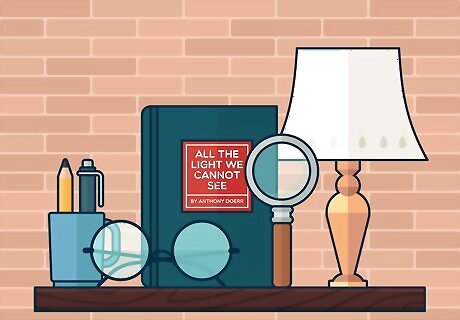
Analyze the examples. Once you have read several examples of historical fiction, you should analyze and compare them. You can get a better sense of how you will approach historical fiction by first considering how other authors have approached their historical subject matter. You may find you respond more to certain writing or styles as a reader, and decide to emulate this in your own writing. You may ask yourself several questions about the texts, including: How does the author introduce the historical time period to the reader? Do you believe the historical time period is accurately described, and if so, why? How does the author use physical and emotional characteristics to describe the main characters? What is the central conflict of the story and how is it explored in the novel? Does the author create an ending that is satisfying or unsettling? Does the story feel historically accurate and creatively written? If so, in what ways does the author achieve this?
Conducting Your Research

Determine the exact time period and location of your historical novel. Most historical fiction begins with a focus on an exact time period and location. You should consider a time period that you are interested in or curious about as well as a location within that time period that might be interesting to readers. Be specific when you choose a time period and location, as the more specific you are, the more specific your research will be. This will allow you to uncover fascinating historical details about the time period and location that you can then use in your fiction. For example, rather than choose, “20th century, France," you may choose “1935, Paris." Or, rather than choose “18th century America," you may choose to focus on “1776, Philadelphia."

Look for research texts at your local library. The first place you can go to for research is your local library. Talk to the reference librarian about your specific time period and location. Ask him or her for possible texts that can help you get a better sense of everyday life in the era. Look for encyclopedias that focus on specific time periods and locations. You can also look up biographies of historical figures who were alive during the time period. You can read scholarly texts that focus on specific elements of the time period and location, such as what people ate in 1776, Philadelphia or how people dined out in 1935, Paris. You may be able to lean on historical texts that delve deep into the everyday customs and practices of the time.

Study catalogues, newspapers, and magazines. You can also see if your local library has catalogues, magazines, and newspapers from the time period and location. Often, libraries will have these resources on microfilm, allowing you to browse through the news stories, trends, and talk of the day. Magazines and catalogues can be a useful way to get a sense of how people were writing, talking, and gossiping during your chosen time period. You can also notice any popular slang or terms from the time period and the more popular products consumed by people during the time period.

Speak to history experts. You may need to expand your research practices to discussions with professionals who are experts in a certain time period and location. You can find these experts by searching for the authors of historical texts online or by talking to other professionals in the field. You should then contact them and ask for a meeting about specific details that will help you create a more believable historical world for your story. You should look for experts that are very proficient in a certain aspect of the time period, such as an expert in embroidery in 17th century America or an expert in the origins of horse racing in 19th century Paris. This will then allow you to ask them very specific questions about the time period and get specific answers in return. You can also ask experts to refer you to other experts they may know, creating a network of experts for you to lean on as you write your story. Using experts for different elements of your story will ensure you are getting an informed opinion and make your story feel more authentic.

Use caution when you do research on the internet. In our current digital age, it may seem more convenient and efficient to search for historical information online. However, you should do so with caution, as information on the internet is not always accurate or vetted by experts in the field. Do not assume that just because information is in an online encyclopedia or has been verified in some way by only one expert, it is correct. The internet can be a good place to get inspired and acquire some basic background information on your chosen time period. But it should not be your sole method of research. You should fact check all the information you get online with scholarly texts and discussions with history experts. Try to verify the information from the internet with other outside sources so you are sure you are using historical fact that you can then transform into fiction.
Creating Your Setting

Consider the landscape and terrain of the setting. You should start by sketching the geography of the setting, from the landscape to the weather. Is the historical setting consist mostly of forest and greenery, with rolling hills and castles? Does the historical setting consist more of a developing metropolis, with monuments, buildings, and townhouses? You can lean on your research to answer these questions and ensure you are creating an accurate historical backdrop for your story. You should try to be specific about the landscape and terrain of your setting. For example, if you are writing about a street in Paris, France in 1935, you may ask yourself: Were there cobblestone streets and row houses or apartment buildings? What monuments might be visible from the street? What were the major landmarks on the street? Where there trees and other greenery on the street or off the street?
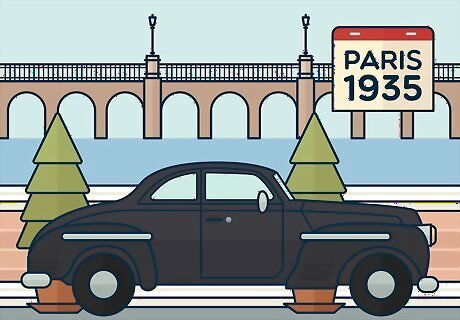
Determine how people get around in the setting. You should also think about how transportation functioned in your setting during a specific time period. Your characters will need to move around in your setting and you should try to be historically accurate about how they did this. Maybe there are horse drawn carriages in your time period and location or a specific make of car that was popular in your time period. You should also consider if there were different means of transportation for different classes and groups. For example, in Philadelphia in 1776, women may not have been allowed to use horse drawn carriages on their own. Or, in Paris in 1935, there may have only been one to two automobile models available to only wealthier individuals and families.

Describe the sensory details of the setting. You should also consider how it feels to experience a day in the setting, using the five senses: sight, smell, touch, sound, and taste. Doing this will allow you to use more vivid and detailed description in your writing, making the historical time period come alive in your story. For example, you may try describing a day in the life of someone living in Paris in 1935 on a residential street. You may describe the smell of bread from the bakery in the morning, the sound of horse carriages in the distance, the touch of starched sheets, the taste of tea at the breakfast table, and the sight of the sunlight coming into the kitchen.

Use maps and other visual representations. You can also lean on visual representations of a location, such as maps, to help you get a better sense of your setting. Maybe you come across a map from the 17th century that you can then use as a visual reference or maybe you find a diagram of a horse drawn carriage that allows you to better depict transportation in your chosen time period. Using visuals can really help you picture what life was like for the time and translate these details into your writing. You may also include a map or other visual representations in your story as supporting material. Your readers may appreciate a map of a time period and location, especially if it is unfamiliar to them.
Developing Your Characters
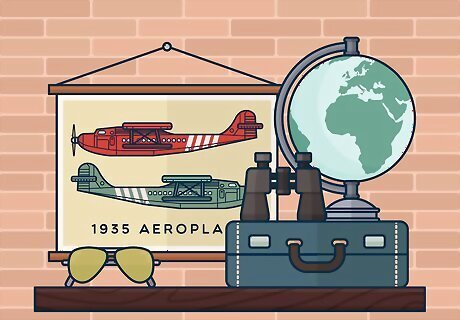
Look for historical characters with a unique backstory. During your research, you should look for individuals in history who were interesting and unique for their time. This could be a mistress of a British monarch who proposed sweeping changes to the system, or the village woman who helped embroider the stars on the first American flag. Look for characters who stick out in their time as rebels, renegades, or change makers. You can then use these historical characters as the basis for fascinating fictional characters. You should also consider the historical characters that surround your main characters. Maybe your main character frequented the same circles as famous writers and thinkers of the time. Or, maybe your main character was close friends with a major historical leader. You may also find historical characters who may have been mere footnotes in history and largely ignored by historians. You could then bring these forgotten characters to life in your fiction and shine a spotlight on their fascinating lives.

Find historical characters that dealt with conflict. You should also try to focus on historical figures who were in conflict with themselves, with the outside world, or with other individuals in their life. Historical characters who were forced to deal with conflict will often be more interesting and engaging to readers. You can also use their conflict as the main conflict in your story. For example, maybe your story is about a struggling artist in Paris in 1935. The artist may be based on a forgotten artist of the time who struggled with drug addiction and poverty. The artist may also have a conflict with the outside world in that her work was often misinterpreted or ignored by the critics of the day. She may also have a conflict with other artists in her circle, who are becoming more famous and well known than her. You may also use the historical time period as a source of conflict. Often, unique characters in history stand out for their attempts to go against the status quo of the day or the social norms of their time. A story about a female main character who sewed the stars onto the first American flag, for example, may be interesting because during this time, women were not permitted to vote or to participate in the politics of the day. This may then create a conflict for your main character, as she is not able to actively participate in the political process, even though she desperately wants to get involved and be part of this process.
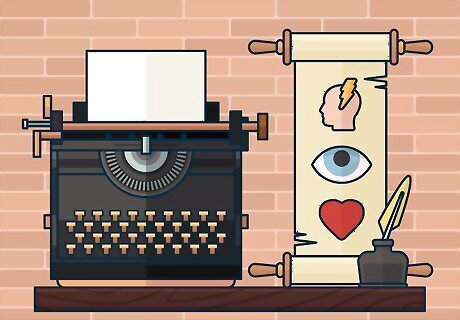
Describe the physical and emotional qualities of your main character. You should create character studies of your characters so you have a good sense of their perspective. Your character studies may include physical qualities, such as the character’s appearance and clothing. You should also include emotional and psychological qualities, such as how your character thinks, acts, and perceives others around them. For example, you may have a character study of your main character that reads: Physical qualities: Tall, thin, dark skin, thin nose, wide eyes, with long plaited hair. Has a cleft lip from birth and a scar on her left ear. Emotional/psychological qualities: Street-smart, no formal educational training, devoted to painting and drawing, obsessed with fame, short-tempered, attractive to men and women, tendency to spend money as soon as she has it on drugs, alcohol, and food.

Create flawed characters. Avoid creating one-dimensional characters by giving your characters flaws and imperfections. Nobody is perfect, after all, especially throughout history. Make sure your characters have their own issues and problems, as this will make them more believable and relatable to your readers. For example, your main character may have artistic talent and the ability to leave an important mark on painting. But she may also struggle with drug addiction and poverty, leading her to make some difficult and imperfect decisions to survive.
Writing Your Story
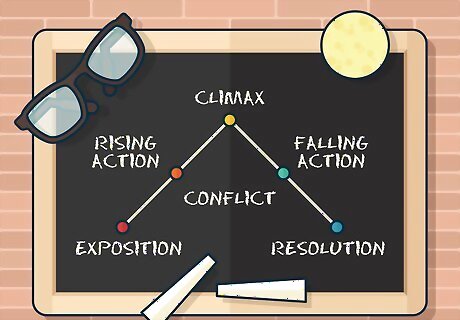
Create a plot outline. You should start the writing process by creating a plot outline so you have a general sense of where your story is headed. You may deviate from your plot outline as you get into the writing. But having a guide can make it easier to dive into the story and get words on the page. You may use a plot diagram to outline your story. A plot diagram is one of the more common ways to structure your story and consists of six sections: the set up, the inciting incident, the rising action, the climax, the falling action, and the resolution. Alternatively, you may use the snowflake method. The snowflake method is often used by writers who do not want to follow the more traditional plot diagram, but are still looking for a way to organize their story. The snowflake diagram consists of a one sentence summary of the story, a one paragraph summary of the story, character synopses, and a summary of scenes.
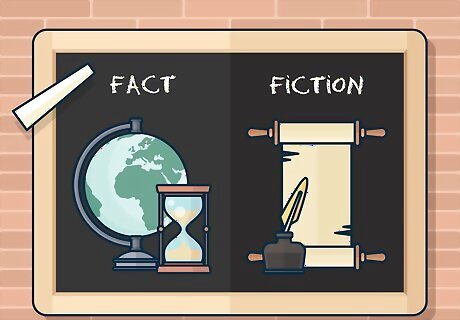
Do not limit yourself to historical fact. Many writers fall into the trap of letting historical fact take over their fictional story, creating a story that reads more like a history lesson than a gripping fictional tale. Avoid letting historical fact limit or constrain your ability to tell the fictional story. Instead, use historical fact as a basis for your fictional story and feel free to tweak or adjust smaller details for the sake of your story. Though you should strive for accuracy and fact in your story, you should also be willing to sacrifice historical fact for a good tale. You are writing fiction based on some element of history, after all, and are not obligated to ensure every detail is historically correct. The need for historical fact should never trump your ability to create an engaging tale.

Avoid cliche descriptions and details. Cliches are phrases that have become so familiar they no longer hold meaning or make an impact on your reader. You should strive to create descriptions and details that are unique and unfamiliar, as your reader might tune out if your sentences are littered with phrases they have heard before. It can be tricky to avoid cliche when you are writing historical fiction, especially if it is set in a time period with familiar images and phrases, such as the British monarchy or turn of the century Paris. You may need to work extra hard to ensure your writing does not fall into cliche when describing the setting of your story or the perspective of your characters. For example, rather than describe a party in turn of the century Paris as “packed to the gills, with a bevy of artists and creative types,” you might describe it with more detail, “so crowded you could only spot the champagne glasses on brass trays, floating over the perfumed heads of every known artist in Paris.”

Read and revise your rough draft. Once you have created a first draft of your story, you should sit down and revise it. Historical fiction can take years to write and you may write many drafts. You should be prepared to revise your drafts several times until you have a finished manuscript. Read the draft out loud to yourself. You should highlight any cliches or familiar language as well as any awkward sentences or phrases. Make sure you are historically accurate whenever possible and that you have a good reason for the instances when you deviate from history. You should also ensure your draft adheres to your plot outline. If you deviate from your plot outline, it should be for the good of the story overall. You should also read the draft out loud to someone else. Get feedback and constructive feedback from them to improve your writing and your next draft. Often, getting an outside perspective on your work can only make it better and more engaging for your readers.


















Comments
0 comment